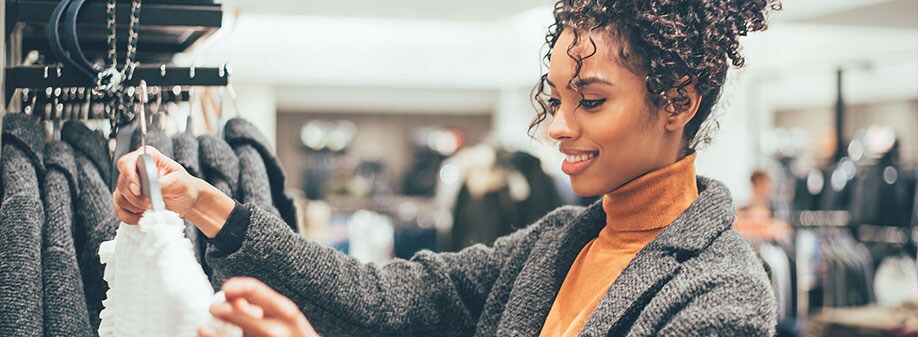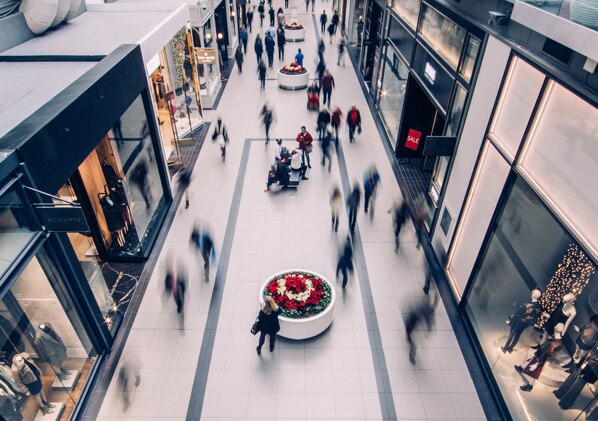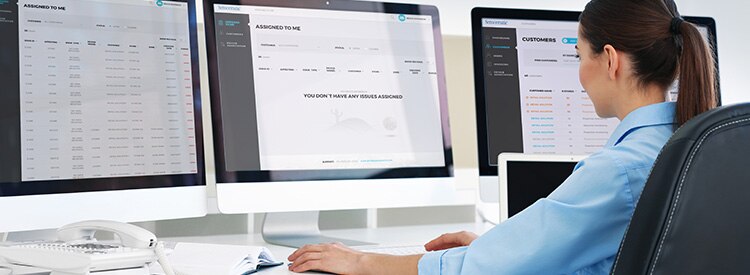Article
Apparel stores 2019: Dressed for Gen Z success

Fashion retail is famously fast-paced and inventive, but the bar is raised even higher in 2019 as a major global generational shift takes place.
Demographers predict that during 2019 members of Gen Z (using 2001 as the generational split) will outnumber Millennials as the most populous generation. And the early signs are that Gen Z will shake things up considerably.
For this reason, retailers are paying more and more attention to Gen Z, as well as Millennials, conscious that the way the younger shoppers use stores is likely to be markedly different.
Here are trends that can be used to capitalise on Gen Z’s use of stores:
Self-service payments for an easy life
It’s not just the grocery sector that has embraced self-service technology. Recent store openings by Nike have included self-service facilities, enabling their core demographic to choose items and leave without passing through a traditional till-point. Self-service payment terminals and phone apps are already proving a hit with the youngest shoppers, who have been born into a world of automation and who expect immediate gratification and convenience.
Self-checkout machines free up time for staff, allowing them to balance other responsibilities much more efficiently. Traffic data can be used to optimise labour scheduling for the very best use of store teams, keeping a lid on costs and helping improve employee engagement.
AR and VR enhancing the physical retail experience:
Consistent with the global view that apparel retailers need to invest in unique in-store experiences to drive traffic, a natural extension of that would entail augmented reality (AR) and virtual reality (VR) that better connects the digital world with the physical world.
Early trials by Zara, Burberry and Gucci have allowed customers to interact with new ranges via smartphone apps that bring displays and images to life and connect to the buy button. The challenge will be managing costs while at the same driving higher rates of conversion. Traffic data can help retailers understand the impact of AR technology in stores, on traffic, conversion, dwell time and Average Transaction Values (ATV).
Gender neutral fashion ranges hitting the shelves:
Diversity and inclusion will be big news, brought to life in fashion stores. There is a strong affinity amongst Gen Z shoppers for freedom of expression and the right of an individual to celebrate their life choices, and gender fluidity is a major part of this. Research shows that 56% of Gen Z already shop outside of their specific gender. H&M spotted this trend last year and launched its Ungendered, gender neutral collection with cult brand, Eytys, in a bid to offer customers styles that span genders.
Gender neutral ranges will be new territory for apparel and footwear retailers who need to analyse their store traffic and customer behaviour data to hone their offer. Traffic data can reveal whether or not shoppers would like assistance, where in the store is best to locate ranges, use of a dedicated fitting room, and what conversion rates are possible.
Pop ups and ‘Instagrammable’ spaces
Pop-up stores are a hit with the Gen Z, because, as the name suggests they are temporary and therefore create a ‘fear of missing out’ (FOMO). In the age of social sharing, pop-up stores should therefore be designed and laid out with Instagrammable spaces – able to create unique, memorable and sharable experiences for visitors.
Pop ups allow apparel brands to extend their reach into the community, and showcase their wider brand values. Fitness and lifestyle brand New Balance has launched a pop up destination in London which combines a pub, a gym studio and running clubs – all promoting the brand’s London Marathon sponsorship.
Conscientious consumerism comes alive in stores
Gen Z-ers and Millennials are looking to ascribe to companies that focus on sustainability and have a socially beneficial purpose. Stores can help retailers put socially-conscientious policies into visible action.
We’re seeing the emergence of companies like Rent the Runway, Le Tote or Poshmark offering the concept of renting clothes, and buying less. High street brands such as H&M have well-publicised apparel recycling points in stores, and department store John Lewis has trialled buying back customers’ unwanted garments to reduce landfill. Retailers can look at their traffic data to build an understanding of how stores could be used for new recycling efforts, how many visitors take part, and which store locations are best suited to offering clothing drop off points.
Do not guess to impress
It’s clear that exciting new store formats will evolve in the apparel retail sector over the next few years.
What’s vital is that instead of jumping on every trend bandwagon, retailers are judicious and carefully track the traffic and conversion impact of any new initiatives and features. They should select digital technologies that match customers’ specific needs and their own brand identity. New ways of serving must address existing problems and challenges, and deliver measurable results. Ultimately guesswork is not an option when dressing to impress Gen Z. Let data insight show the way.
Find out more about how to use traffic data analytics to boost the performance of apparel stores in our new report: Apparel Retailers and Traffic Data.
Explore Related Topics

Ready to see how Sensormatic Solutions can transform your bottom line?
Contact UsStay one step ahead with our articles, insights and latest news.
See more

Sensormatic News Desk

